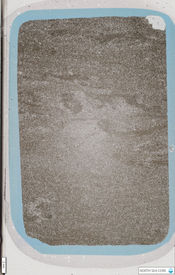NORTH SEA CORE DATA
We recognise the importance of having access to both physical and digital geoscience data. In addition to making core material available, we hope to make a range of digital data available for download in time. Please contact us if you with any questions or if you are interested in something we have not yet made available for download.
You can use the interactive map below to locate our data by toggling on and off different datasets. North Sea Core CIC data is licensed under a CC-BY-4.0 License. Please credit North Sea Core CIC for any material used.
BISCUIT CUT CORE PHOTOS
HALF CUT CORE PHOTOS
CORE FACIES DATA
High resolution core logging, including CT scans, mineralogical interpretation, core facies and rock properties.
Analysis undertaken by EPSLOG Engineering as part of their 'CoreDNA' program.
Coming soon!
CORE LITHOLOGIES
We selected 18 core samples which record the geological history of the North Sea and document key lithologies. Half of the core was sent for thin sectioning and the other for geochemical analysis to create a unique teaching or training data set.
GEOCHEMICAL DATA
Geochemical data of core samples from which correspond to the thin section data of key North Sea lithologies. The data includes combined ICP-OES (major trace elements including Sc, Zn and Zr) and ICP-MS (other trace elements).
Analysis undertaken by Alex Finlay at Chemostrat Ltd.
THIN SECTION DATA
All thin sections have been scanned in Bright Field (BF), Plane (PPL) and Cross Polarised Light (XPL), and Cross Polarized Light with Luminesce (XPL+L). The default image magnification is set at 0.122x but full magnification is 10x.
The scanned images and supporting files can be viewed with Virtual Slide Microscopes. This is third party software and requires the user to register. While North Sea Core cannot be held responsible for any issues with external software, please contact us to discussing viewing options.
Thin sections made by Mike Rickarby at mtech Thin Sections Limited and scanned by Jake Jacovides at Millennia Stratigraphic Consultants Limited. Project facilitated by Scott Parker at Scott Parker Associates.
CORE CT SCANS
There are many ways to analyse core samples. Computerised Tomography (CT) scans are commonly used in medicine but can be used as a non-destructive tool to image core material. Powerful x-ray photons create a 3D model where dense material appear brighter and less dense material appear dull. CT scans can be used to investigate pore networks, fractures, sedimentary bedding and more. Our CT scans have a 300 microns per slice thickness.
Scan data produced by Core Specialist Services. Videos produced by North Sea Core CIC with end credits by Studio No. 7.
BRENT DRONE DATA
By using a drone to film a whole core run, we hope to show the scale of core and the small but incredibly useful window it can give into the geology below our feet. The core material is from 211/23-A13 which penetrated the whole of the Middle Jurassic Brent deltaic succession.
This was an initial run of this activity and was a learning experience for us at North Sea Core, so we have made a few mistakes such as missing a gap in the cores (as outlined in the presentation). However, we believe this material is still of use and the mistakes would make for an interesting teaching exercise. There are four videos, an introductory presentation and the composite wireline log. All material can be downloaded and edited for your own use.




























































































































